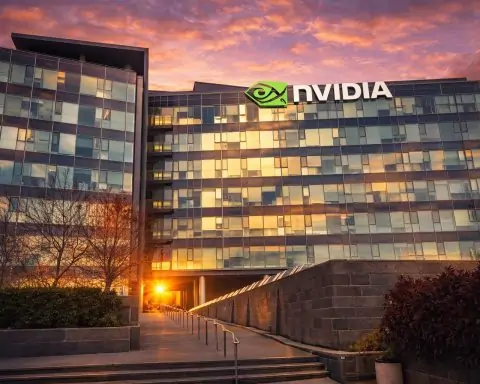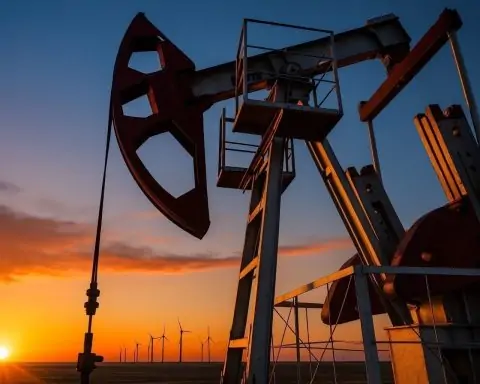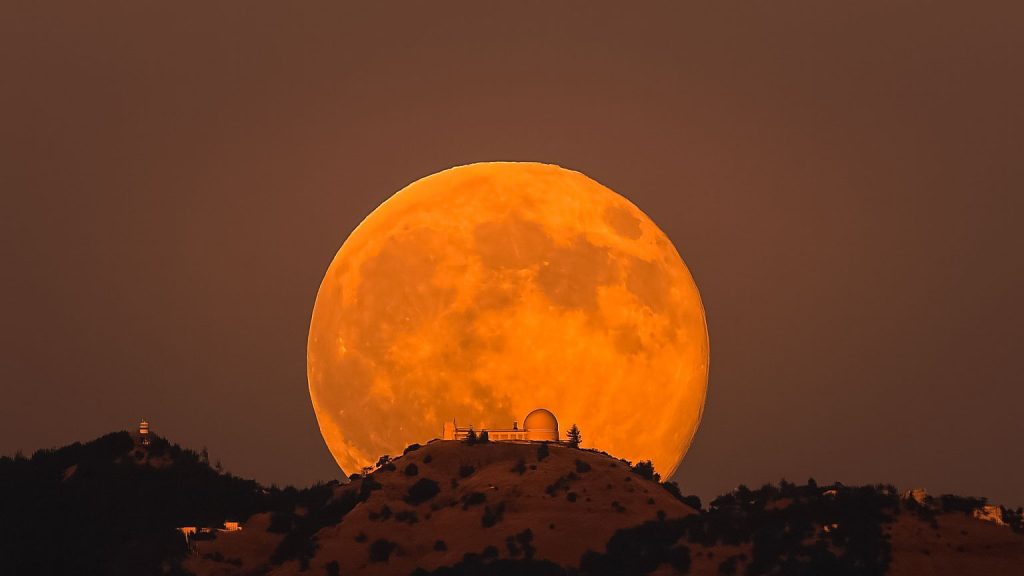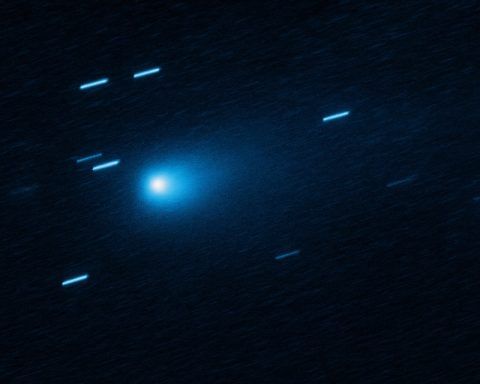- On July 9, 2025, Earth’s length of day was predicted to be −1.30 ms, the fastest day of 2025 and close to 2024’s all‑time −1.66 ms.
- A 1 millisecond timing error can yield GPS position errors of hundreds of meters and disrupt high‑frequency trading algorithms.
- Leading explanations for the spin‑up include an unusual Moon alignment, deep core fluid motions, and mass redistribution from melting ice.
- Future ultra‑short days are forecast for July 22 and August 5, 2025.
- The International Earth Rotation and Reference Systems Service may introduce the first negative leap second as early as 2029.
- More than 450 cesium and hydrogen maser clocks feed data into IERS Bulletin A, showing July 9’s predicted length of day.
- The path to a negative leap second involves daily ΔUT1 monitoring by IERS and an ITU‑R/BIPM agreement to delete 23:59:59 from UTC, potentially in 2028.
- Climate‑driven mass shifts from melting ice are estimated to slow Earth’s spin by about 1.33 ms per century, partly offsetting lunar and core accelerations.
- Large earthquakes, winds, and even seasonal tree growth can nudge day length by microseconds.
- Software and infrastructure teams are testing smear techniques to glide over the missing second and prevent system outages.
Earth’s rotation just clocked one of its quickest spins in modern history, trimming more than a millisecond off the familiar 24‑hour day on 9 July 2025.1 ms sounds trivial, yet the ripple effects reach everything from GPS satellites to global stock exchanges. Below you’ll find the latest measurements, the science behind the mystery, expert commentary, and what timekeepers may do next—including the unprecedented step of deleting a second from world clocks.
Key Take‑aways (TL;DR)
- Fastest day of 2025 so far: July 9 is predicted to come in about –1.30 ms, nearly matching 2024’s all‑time record of –1.66 ms. [1]
- Why it matters: Even a 1 ms error can throw GPS positions off by hundreds of meters and scramble high‑frequency trading algorithms. [2]
- Leading suspects: An unusual alignment of the Moon, fluid flows in Earth’s core, and the redistribution of mass from melting ice are all pushing and pulling the planet’s spin. [3] [4] [5]
- Next milestones: Similar ultra‑short days are forecast for 22 July and 5 August 2025. [6] [7]
- The fix on the table: The International Earth Rotation and Reference Systems Service (IERS) may need to introduce the first‑ever negative leap second as early as 2029. [8] [9]
1. How We Know July 9 Was Lightning‑Fast
1.1 Atomic‑Clock Measurements
More than 450 cesium and hydrogen maser clocks synchronize the world’s time. Their data feed into IERS “Bulletin A,” which shows July 9’s predicted length of day (LOD) at –1.30 ms. [10] [11]
1.2 Recent Records in Context
| Year | Shortest Day | LOD (ms) |
|---|---|---|
| 2020 | 19 Jul | –1.47 |
| 2021 | 09 Jul | –1.47 |
| 2022 | 30 Jun | –1.59 |
| 2023 | 16 Jul | –1.31 |
| 2024 | 05 Jul | –1.66 (all‑time) |
| 2025 | 09 Jul | –1.30 (predicted) |
| Source: timeanddate & IERS [12] |
2. What’s Making Earth Spin Faster?
2.1 The Lunar Wild Card
When the Moon strays far north or south of Earth’s equator, its gravity can tug the planet into a marginally quicker twirl. Astronomer Dr. Leonid Zotov calls the 2025 alignment “something nobody expected.” [13]
2.2 Hidden Currents in the Core
Seismic studies reveal eddies in the molten outer core that can speed the crust up—or slow it down—by exchanging angular momentum. Geophysicist Duncan Agnew notes that “the core has been triggering a speed‑up for about 50 years.” [14]
2.3 Climate‑Driven Mass Shifts
- Melting glaciers move water toward the equator, acting like a skater extending her arms and slowing the spin by ~1.33 ms per century. [15] [16]
- This drag partly cancels the lunar/core acceleration, delaying—but not erasing—the need for a negative leap second. [17]
2.4 Earthquakes, Winds & Even Trees
Large quakes (e.g., Japan 2011) nudged day length by microseconds, while seasonal leaf growth shifts mass upward and slightly slows rotation, explains geophysicist Richard Holme. [18] [19]
3. Why Milliseconds Matter in a Digital World
3.1 Navigation & Telecom
A 1 ms timing slip equates to ~300 km of error in satellite ranging. Networks that steer aircraft and container ships must compensate or risk positional drift. [20]
3.2 Finance & Data Centers
High‑frequency traders timestamp orders to the micro‑second. A rogue negative leap second could duplicate or mis‑order transactions, as happened to several exchanges during the positive leap second of 2012. [21]
3.3 Civil Timekeeping
Retired U.S. Naval Observatory director Dennis McCarthy warns that “skipping a second is tougher than adding one because most software was never designed for it.” [22]
4. What the Experts Say
| Expert | Affiliation | Key Quote |
|---|---|---|
| Duncan Agnew | Scripps Institution of Oceanography | “This is an unprecedented situation and a big deal.” [23] |
| Judah Levine | NIST | “Negative leap seconds are possible in principle but unlikely in practice—yet the trend is narrowing that gap.” [24] |
| Dennis McCarthy | USNO (ret.) | “We are headed toward a negative leap second—it’s a matter of when.” [25] |
| Leonid Zotov | Moscow State University | “Nobody expected this; the cause of the acceleration is not explained.” [26] |
| Richard Holme | University of Liverpool | “Mass moved by summer leaf growth is enough to measurably slow Earth’s spin.” [27] |
5. The Road to a Negative Leap Second
- Continuous Monitoring – IERS publishes daily ΔUT1 (atomic vs solar time) values; once the offset approaches –0.9 s, action is required. [28]
- International Vote – The ITU‑R & BIPM must agree, likely in 2028, on a date to delete 23:59:59 from Coordinated Universal Time. [29]
- Software Hardening – Cloud providers and stock exchanges are already testing “smear” techniques to glide over the absent second. [30]
If current acceleration holds, Agnew’s Nature study pegs the deletion for late 2029. [31] [32]
6. What Happens Next?
- Watch July 22 & August 5. Both are forecast to shave up to –1.5 ms. [33] [34]
- Follow IERS Bulletins. Free weekly updates flag any leap‑second decisions months in advance. [35]
- Prepare Your Systems. Time‑critical operations should test negative‑leap‑second patches now, not in 2029. [36]
7. Frequently Asked Questions
Is this dangerous?
No—planetary physics keeps the change imperceptible to humans, but technology that counts microseconds must adjust. [37]
Will days keep getting shorter?
Probably not indefinitely; long‑term tidal braking dominates, so the current speed‑up is expected to be temporary. [38] [39]
Can climate policy slow the spin?
Reducing ice melt would marginally speed up Earth again, but the effect is far smaller than lunar or core dynamics. [40]
Conclusion
July 9 2025 reminds us that our “steady” 24‑hour day is a moving target governed by celestial mechanics, deep‑Earth turbulence, and even climate change. Whether the world’s timekeepers ultimately strike a second from the clock, the episode highlights a deeper truth: time is not merely kept—it is negotiated between humanity’s instruments and a restless planet. Stay tuned; the next chapter may be only milliseconds away.
Further Reading
- Timeanddate: “Earth Will Spin Unusually Quickly in July and August” [41]
- Nature: “Climate change has slowed Earth’s rotation — and could affect how we keep time” [42]
- NASA JPL: “How Climate Is Changing Earth’s Rotation” [43]
- CBS/AP joint report on leap‑second prospects [44]
References
1. www.timeanddate.com, 2. time.com, 3. time.com, 4. www.jpl.nasa.gov, 5. www.nature.com, 6. explorersweb.com, 7. www.livescience.com, 8. apnews.com, 9. insidegnss.com, 10. www.timeanddate.com, 11. datacenter.iers.org, 12. www.timeanddate.com, 13. www.timeanddate.com, 14. www.cbsnews.com, 15. www.jpl.nasa.gov, 16. www.nature.com, 17. www.nature.com, 18. time.com, 19. www.livescience.com, 20. time.com, 21. insidegnss.com, 22. www.cbsnews.com, 23. www.cbsnews.com, 24. www.nist.gov, 25. www.cbsnews.com, 26. explorersweb.com, 27. www.livescience.com, 28. datacenter.iers.org, 29. www.scientificamerican.com, 30. apnews.com, 31. www.sfchronicle.com, 32. www.cbsnews.com, 33. explorersweb.com, 34. www.livescience.com, 35. datacenter.iers.org, 36. insidegnss.com, 37. time.com, 38. time.com, 39. www.nature.com, 40. www.jpl.nasa.gov, 41. www.timeanddate.com, 42. www.nature.com, 43. www.jpl.nasa.gov, 44. www.cbsnews.com










